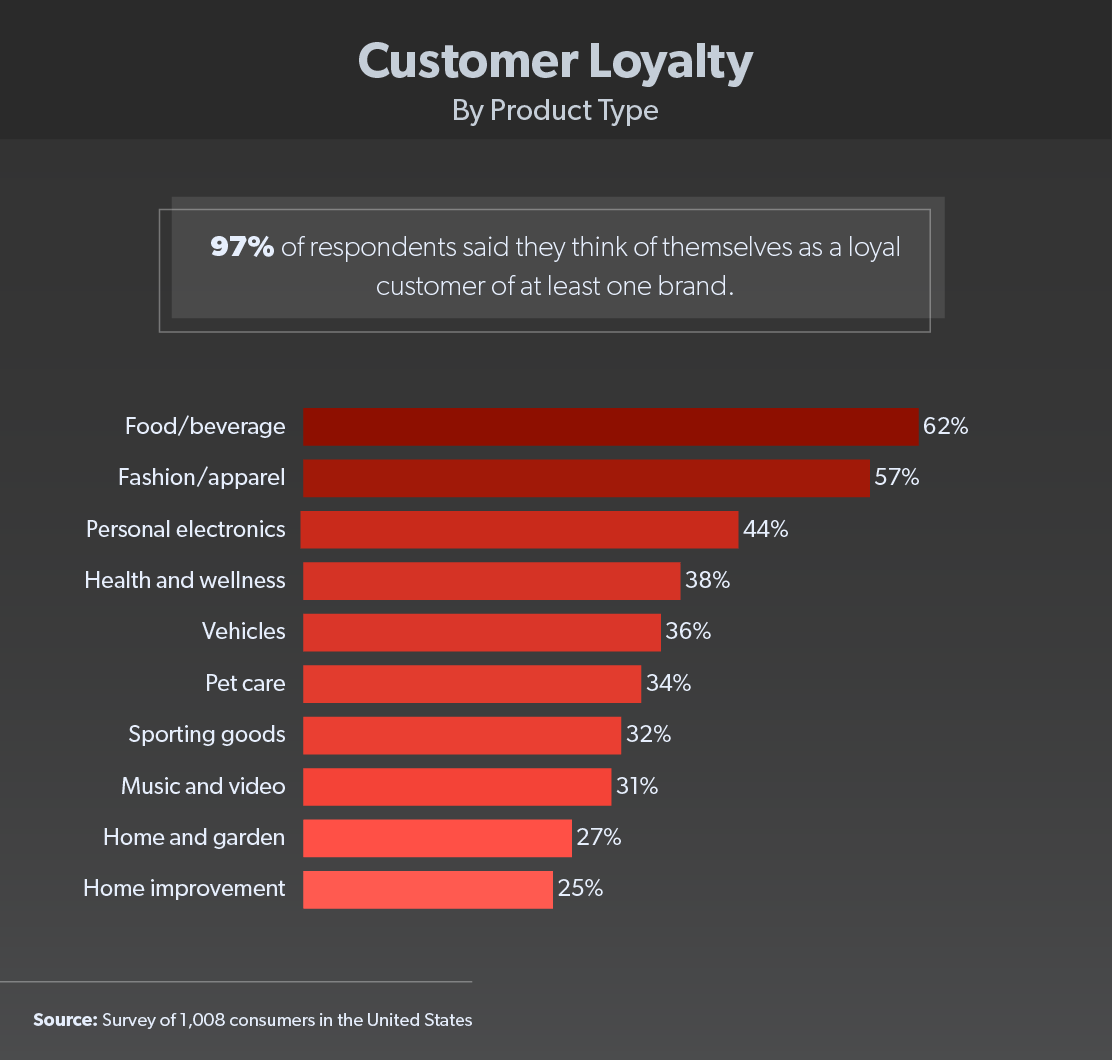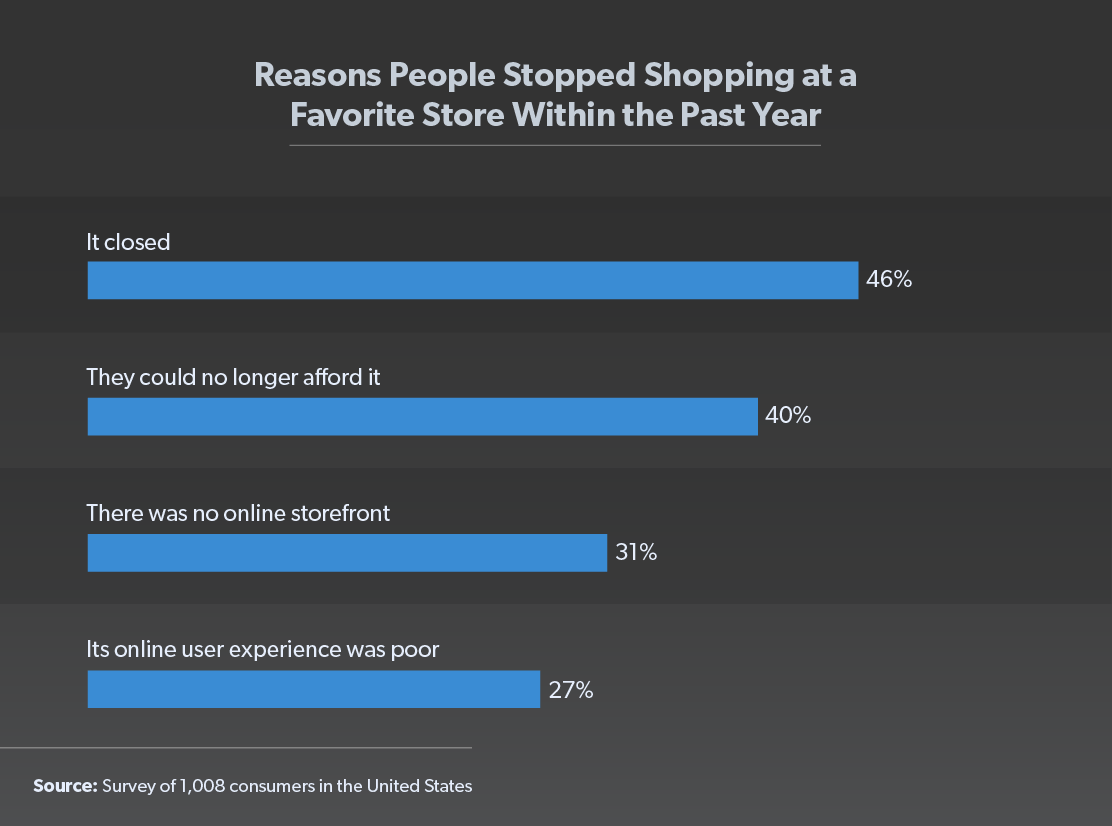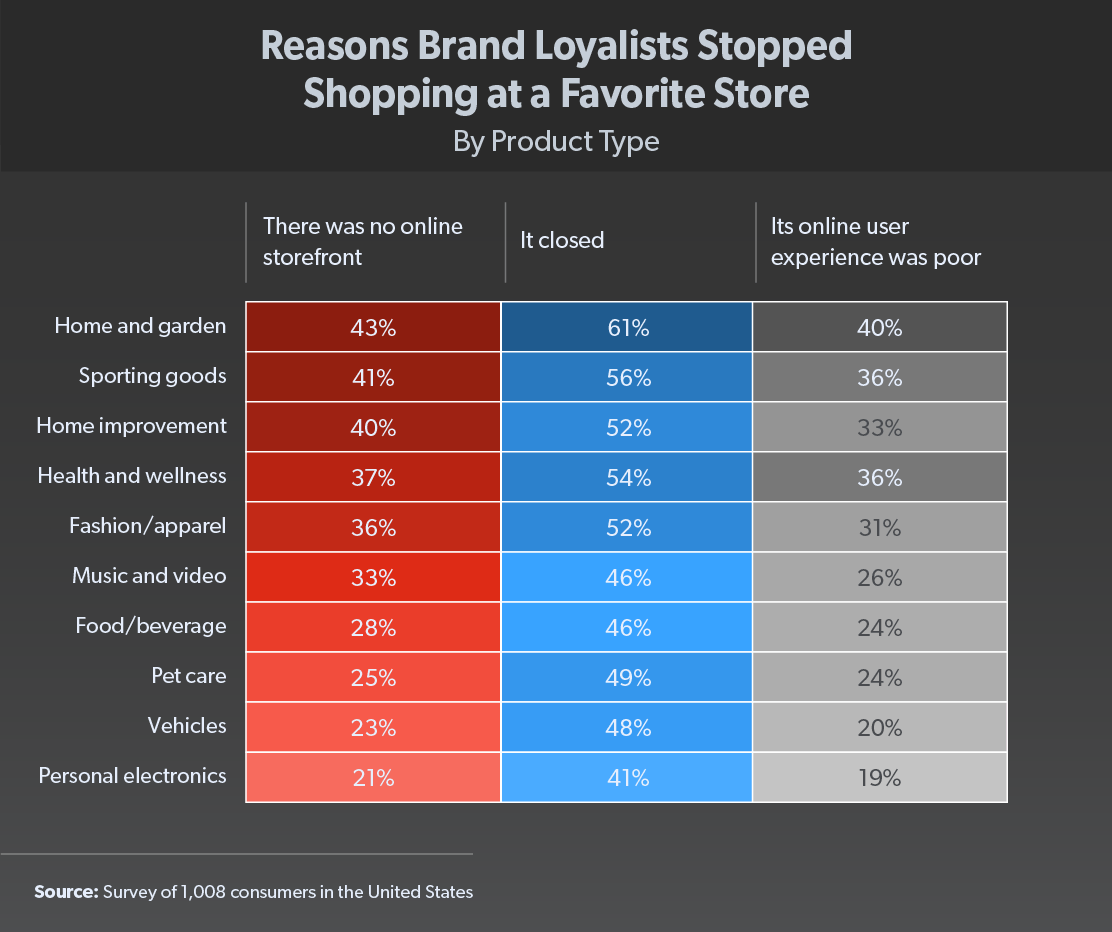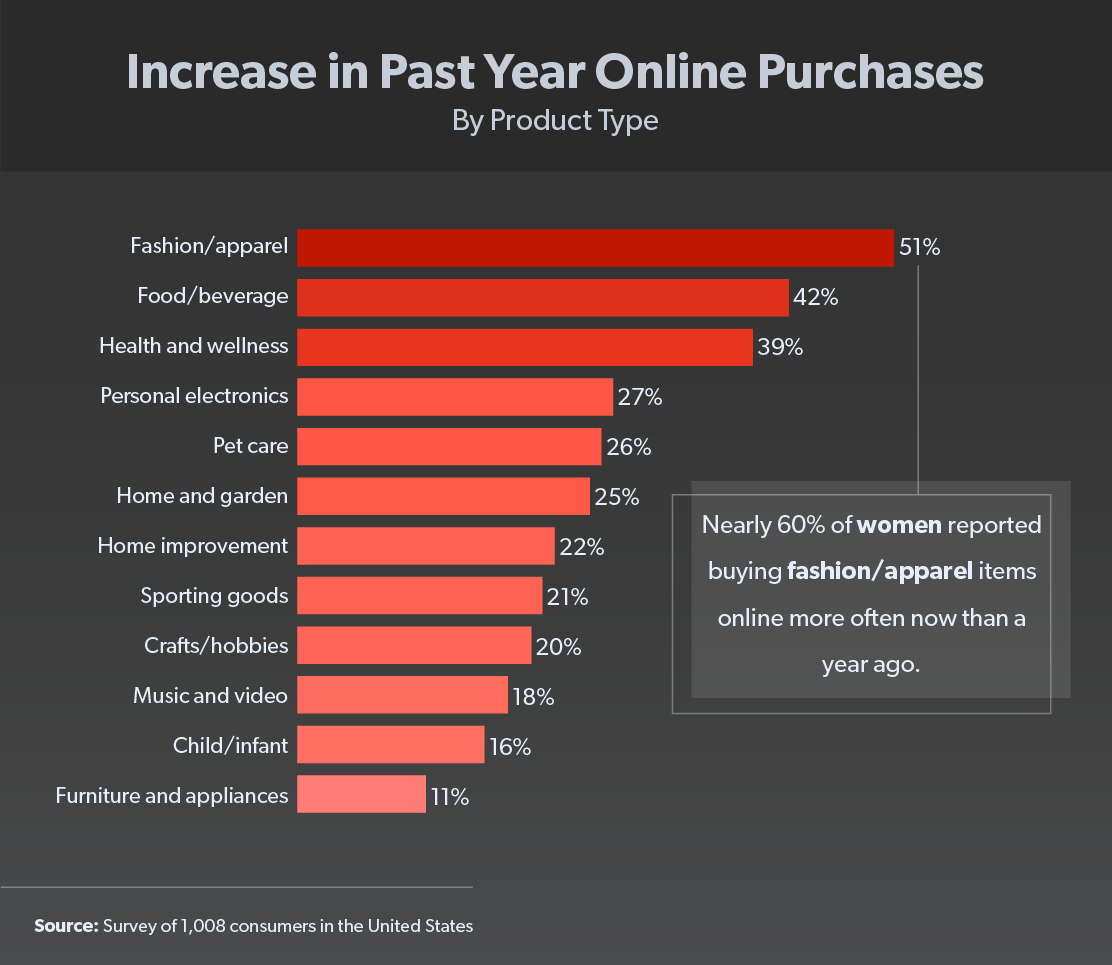
Last Updated: March 22, 2021
Key Findings
- Consumer brand loyalty is at an all-time high. 97% of Americans indicate that they have brand loyalties in 2021, up from nearly 90% in 2019.
- 3 in 10 Americans have stopped shopping at one of their favorite stores over the past year because the store doesn’t have an online storefront, and nearly the same amount stopped because the store’s online user experience was poor.
- Consumer loyalty to home & garden brands has been most negatively impacted over the past year compared to other categories like food & beverage or fashion & apparel.
The 2021 Shopping Landscape
Consumer brand loyalty is on the rise: a 2019 study of over 2,000 American consumers by Yotpo, an eCommerce marketing platform found that nearly 9 out of 10 consumers were reporting loyalty to brands, with nearly a quarter (24.82%) who said they were more brand loyal that year than the last. Following up on this snapshot of American consumer behavior, we’ve developed new insights into customer loyalty in 2021 with a survey examining shifts in consumer loyalty over the tumultuous year of 2020.
Today, in the midst of a pandemic, consumers are forced to make tough decisions regarding the ever-evolving shopping experience. With many stores either temporarily or permanently shutting down in 2020, there has been a massive shift toward online shopping. From 2014 to 2021, the number of digital buyers worldwide has increased from 1.32 billion to 2.14 billion.
Even with the growth of online shopping, some consumers remain unable to access their favorite stores online because of nonexistent or subpar online platforms. How have people responded to the changes that shopping in a pandemic-ridden world have brought upon us? How have their brand loyalties been affected?
Loyalty Levels
97% of Americans reported feeling loyalty toward at least one brand, indicating growth since Yotpo’s 2019 survey. In 2021, people feel most connected to food and beverage brands: 62% pledged their allegiance to a specific one. Fifty-seven percent of respondents tended to stick to a specific fashion or apparel brand as well. People were less rigid when it came to home & garden and home improvement brands – less than 30% reported loyalty to certain ones.
For business owners looking to hold on to customers in fiercely competitive marketplaces, loyalty programs may be an effective strategy to keep clients interested, engaged, and eventually loyal toward a company’s products or services. Many food and beverage companies have effectively rolled out these kinds of programs, and sellers across all verticals could benefit from the continued rise in consumer loyalty by implementing other types of loyalty-generating programs, such as subscription services.
Brick-and-Mortar No More
Among the many headaches the pandemic has given consumers, being unable to shop at some of our favorite stores is notable: 46% of Americans indicated they have stopped shopping at one or more of their favorite stores over the past year because it closed down. Meanwhile, 40% had stopped shopping at one of their favorites during the same span because they could no longer afford it – another sign that COVID-19 has had a massive impact on many people’s financial well-being.
In some cases, technological barriers have kept loyal customers from patronizing their favorite businesses: More than 1 in 4 consumers had stopped shopping at one of their favorite stores due to subpar or nonexistent online platforms over the past year. Even though there is some unavailability and displeasure associated with online shopping, a total of $861.12 billion was spent online via U.S. merchants in 2020, which has been the highest e-commerce growth over the past two decades. The pandemic had a hand in all of this – from 2019 to 2020, retail sales growth only increased from 3.8% to 6.9%, whereas e-commerce sales have skyrocketed from 14.9% to 44% during the same period. Clearly, online shopping is trending upward, and more stores are introducing online shopping platforms. Those that aren’t investing in online platforms risk losing loyal customers to other more accessible businesses.
More on the Downfall
Whether it be because their favorite store had no online shopping platform or that it simply closed, the data shows that some types of brand enthusiasts stopped shopping at their favorite stores more often than their peers over the past year. Brand loyalists of home and garden supplies, sporting goods, and home improvement suffered the most from both cases, with 43% of home and garden enthusiasts reporting they’d ceased to shop at one of their favorite stores over the past year due to its lack of an online storefront. These industries can benefit greatly from investing in online shopping platforms in order to reclaim once-loyal customers and maintain a solid customer base throughout the pandemic. This will also be beneficial post-pandemic due to the general shift toward an online shopping landscape.
To put things into perspective, 12,200 stores closed last year in the U.S. One-third of closings were department and clothing stores, in addition to other mall-oriented chains. Although, these companies accounted for only about 8% of total retail revenue. Last year, 603 companies declared corporate bankruptcy, which included 125 consumer goods and retail firms. Eventually, some of people’s favorite stores were bound to fall into this list.
The Online Frontier
As the mass segue to online shopping continues, we gain a better understanding of which product categories are being bought online the most. Over the past year, the fashion/apparel industry has cultivated a tremendous online shopping presence, with food and beverage and health and wellness claiming the second and third spots, respectively.
One exciting feature that is being developed for online shopping is the use of augmented reality – in the case of clothing, it can help customers visualize what an item will look like on them before buying it, enabling them to be more confident in their purchases.
Loyalty in Review
Clearly, the pandemic has shaken up consumer loyalties. The closing of stores plays a massive part in it – if consumers don’t have access to their products, they can’t be loyal to them anymore. Even if online shopping is an option for that particular item or brand, many are disinterested due to poor user experiences. Seeing as 65% of a company’s business comes from existing customers, businesses should focus on creating or updating their e-commerce platform, especially considering the societal trend toward purchasing products at the push of a button.
Some loyalties have been lost, while others have stood the test of time. As companies continue to invest in their efforts on the internet, along with the already large influx of shoppers going digital, customer loyalty will continue to be put to the test. In a post-pandemic world, when brick-and-mortar stores become accessible again, how many more loyal customers will be left? Only time will tell.
Our Data
This study uses data from a survey of 1,008 consumers located in the U.S. Fifty-one percent of respondents identified as female, 48.7% identified as male, and less than 1% identified as nonbinary. The average age of respondents was 40 with a standard deviation of 12.7 years. The average income of respondents was $58,000/year with a median of $50,000/year. All respondents included in the analysis passed an attention-check question.
The main limitation of this survey is the reliance on self-report, which is faced with several issues including, but not limited to, the following: attribution, exaggeration, telescoping, and recency bias.




